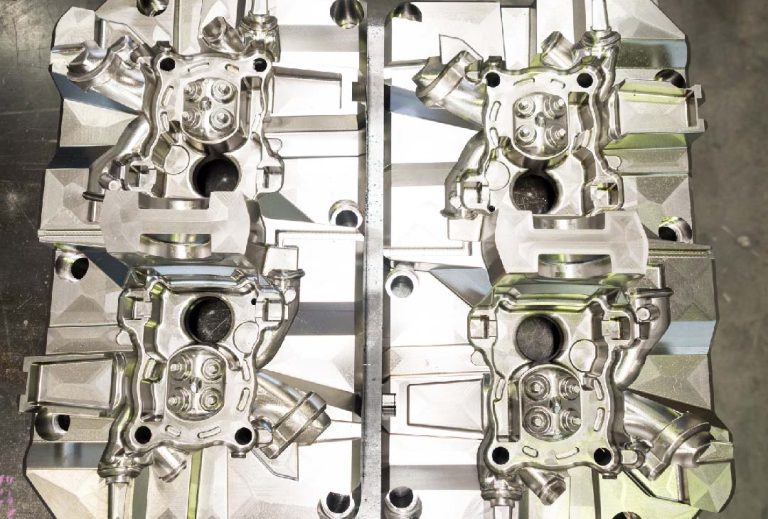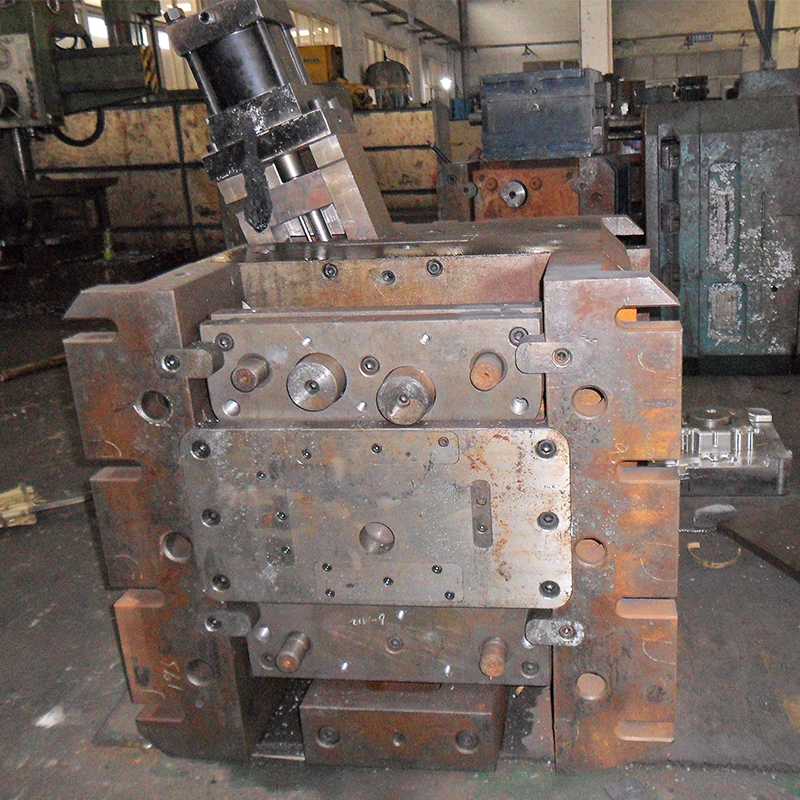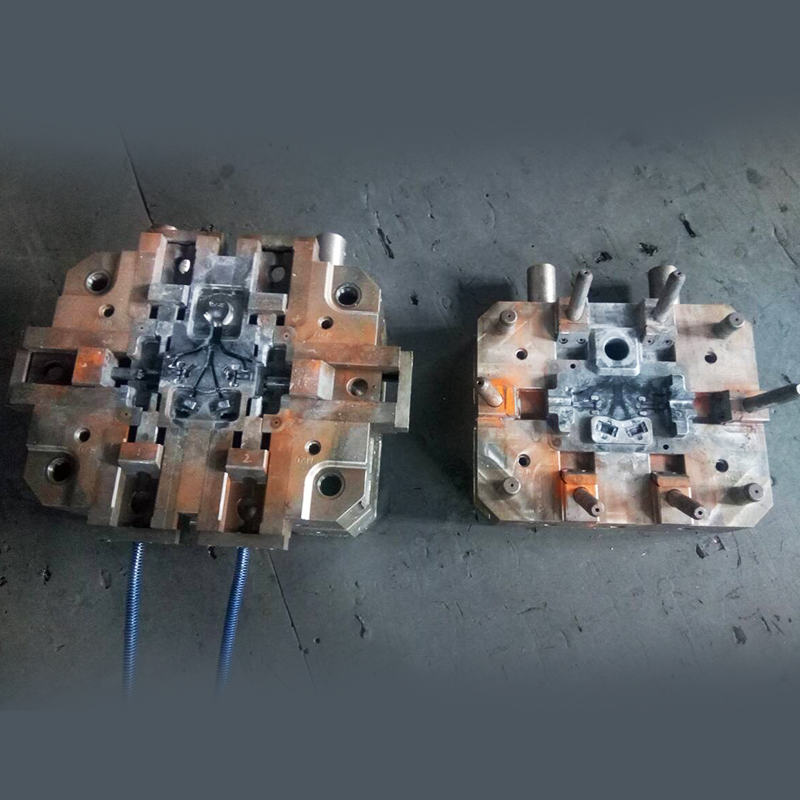The Crucial Role of Mold Design in Aluminum Die Casting
Mold design is a fundamental factor in the process of aluminum die casting, as it shapes the molten metal into the desired form. Every detail of the mold design, from cavity size to runner shape, must be carefully crafted to ensure optimal results.
Efficient configuration of the cavity and gating system is crucial to maximize the efficiency of metal flow. Moreover, mold design directly impacts the quality of the produced components, including dimensional accuracy and surface finish.
The Influence of Mold Design on Aluminum Die Casting

- Ensuring Smooth Material Flow through Proper Mold Design
A well-designed mold guarantees a smooth flow of molten aluminum into the cavity, resulting in uniform filling and minimizing the risk of defects.
Key factors contributing to this include:
- Gating System: A well-designed gating system controls the flow of molten aluminum by determining the optimal size, location, and shape of gates, runners, and sprues. This ensures even material distribution and complete cavity filling without turbulence or air entrapment.
- Draft Angles: Incorporating appropriate draft angles in the mold design facilitates the flow of molten aluminum into the cavity and reduces the risk of material sticking to the mold walls. Draft angles, typically ranging between 1° and 3°, promote uniform filling and minimize defects.
- Wall Thickness: Consistent wall thickness throughout the mold design ensures even flow of molten aluminum in the cavity, minimizing issues like incomplete filling or solidification problems caused by thin or excessively thick walls.
- Venting and Overflow: Adequate venting and overflow channels in the mold design allow air and gases to escape during the casting process. This prevents trapped gases from disrupting the flow of molten aluminum, reducing the likelihood of porosity and other gas-related defects.
- Part Geometry: A mold designed with simplified part geometry, incorporating fillets and radii at sharp corners, promotes smooth material flow and reduces turbulence or voids in the cast part.
- Facilitating Proper Cooling and Solidification through Accurate Mold Design
An accurately designed mold with efficient cooling channels ensures consistent and controlled cooling of the aluminum, resulting in proper solidification and the desired part shape.
By incorporating optimized cooling channels in the mold design, designers facilitate the uniform cooling of molten aluminum, enabling the formation of solid, dimensionally accurate parts.
Strategically placed cooling channels dissipate the heat generated during the casting process. These channels transfer heat from the solidifying aluminum to a cooling medium, such as water or oil, which circulates within them. An optimized cooling system ensures the entire part cools uniformly, reducing the risk of warping or distortion.
The selection of materials for the mold also influences cooling and solidification. Materials with high thermal conductivity, like hardened steel, facilitate efficient heat transfer and contribute to proper cooling.
Mold design should also consider the natural shrinkage of aluminum during solidification. By accounting for shrinkage rates and incorporating appropriate allowances in the mold design, designers can ensure that the final part maintains its intended dimensions and tolerances.
- Minimizing Shrinkage and Warping
Mold design plays a critical role in minimizing shrinkage and warping of the final aluminum part. Shrinkage occurs as molten aluminum cools and solidifies within the mold, causing the part to contract. Warping refers to the deformation of the part due to uneven cooling or material stresses.
To minimize these issues, mold designers consider several factors. Consistent wall thickness promotes even cooling, reducing the risk of localized shrinkage and warping. Thinner sections can solidify too quickly, while overly thick sections can retain heat, leading to longer cooling times and an increased likelihood of defects.
Designers also optimize the placement and size of gates and runners to facilitate a smooth, uninterrupted flow of molten aluminum, minimizing turbulence and ensuring a more uniform solidification process.
Careful planning of cooling channels within the mold helps regulate the temperature in the cavity, ensuring consistent and controlled cooling. By managing the cooling rate, mold designers can minimize material stresses and reduce the chances of shrinkage and warping, resulting in a more dimensionally accurate final part.
- Achieving Enhanced Surface Finish
A well-designed mold not only ensures dimensional accuracy but also significantly improves the aesthetics and functionality of the final product. Several factors contribute to a high-quality surface finish:
- Smooth Mold Surface: Meticulously polishing the mold surface results in a smoother cast part. By reducing surface imperfections and irregularities on the mold, the final aluminum part will have a more uniform and visually appealing surface finish.
- Draft Angles: Incorporating draft angles in the mold design allows for easier ejection of the cast part and reduces the risk of damage to the part's surface during ejection. This contributes to a cleaner, smoother surface finish.
- Parting Lines: Thoughtful placement of parting lines minimizes excess material (flash) and ensures a clean, precise seam on the cast part. This helps maintain a consistent and attractive surface finish.
- Venting and Overflow Channels: Properly designed venting and overflow channels allow air and gases to escape during the casting process, reducing the likelihood of gas-related defects such as porosity or blisters that could negatively impact the surface finish.
- Temperature Control: Accurate temperature control during casting ensures consistent material flow and minimizes defects like cold shuts, where two fronts of molten metal meet but do not fuse properly. Maintaining the optimal temperature leads to a smoother, more uniform surface in the cast part.
A well-thought-out mold design in aluminum die casting is essential for achieving an enhanced surface finish. By considering factors such as mold surface quality, draft angles, parting lines, venting, and temperature control, manufacturers can produce aluminum parts with a superior surface finish that meets both aesthetic and functional requirements.
Conclusion
In conclusion, mold design plays a crucial role in aluminum die casting, influencing part quality, performance, and cost-effectiveness. By carefully considering factors like draft angles, wall thickness, parting lines, venting, and temperature control, utilizing simulation tools, and fostering collaboration between designers and manufacturers, a well-designed mold can yield high-quality aluminum parts.
Investing time and resources in optimizing mold design not only leads to superior surface finishes but also ensures the structural integrity and dimensional accuracy of the final product, contributing to the overall success of aluminum die casting projects.
NINGBO FUERD MECHANICAL CO., LTD
Website: https://www.fuerd.com



